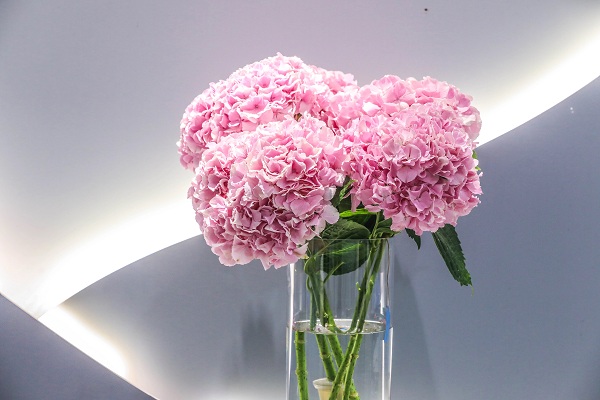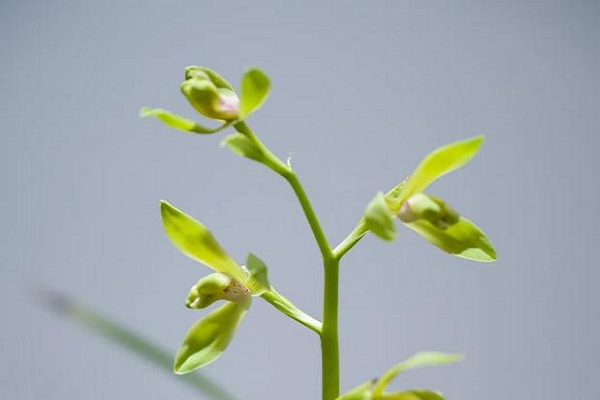
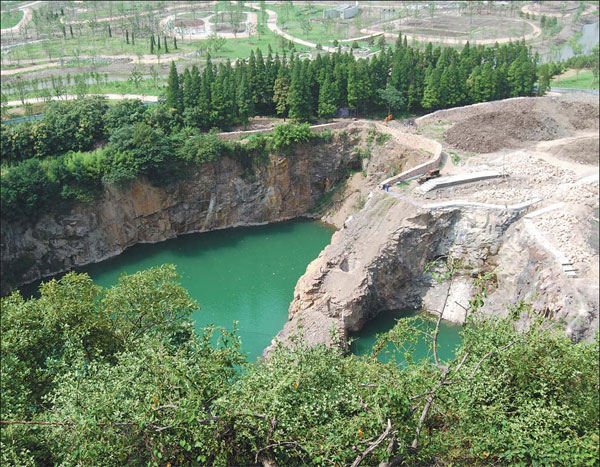
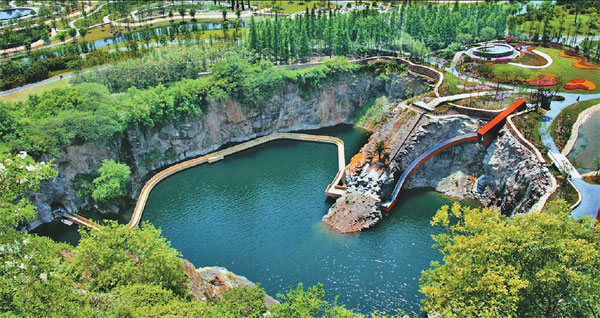
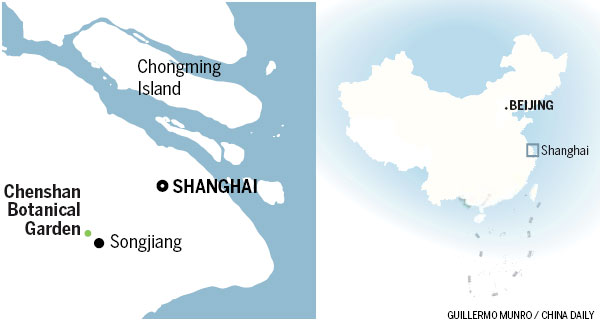
An abandoned quarry in Shanghai has been transformed into an award-winning park that celebrates its industrial past. Zhang Yue reveals the people and history behind the huge project.
Zhang Derong, 58, stands on the spot where his old home once stood, where he lived most of his life, and looks out over a quarry garden in Shanghai. "I don't recognize it at all," he says. The only remnant of the past is a 60-meter deep quarry that is now a landscaped feature of Chenshan Botanical Garden in Songjiang district. "It's such a tranquil and beautiful place now," he says, "and it's fantastic that the years of noise and danger caused by mining have simply faded away."
The quarry garden is an approximately two-hour drive from downtown Shanghai and opened up to the public just before the 2010 Shanghai World Expo.
|
An iron and steel bridge leads visitors from the quarry's top down to the lakeside 30 meters below. Gao Erqiang / China Daily |
Over the past three years it has come to international attention, winning a British Association of Landscape Industries award in 2011. The following year the American Society of Landscape Architects honored the park for being innovative and "restoring the ecology of the quarry, creating a natural and cultural experience in an Oriental style".
"It was my most challenging project ever," says professor Zhu Yufan from the School of Architecture, Tsinghua University, who led the design and reconstruction efforts, costing 32.84 million yuan ($5.3 million) over three years. "But I am so glad that we did it. It was totally worth the effort."
The quarry site on the south side of Chenshan Hill had been mined for decades and its igneous rock was used to build the foundations of Shanghai, its roads and buildings. The quarry was closed in the 1980s and the site lay barren, while the quarry itself filled with water.
Zhang Derong, who was born and raised in Chenshan village, just 100 meters from the quarry, recalls riding cows home after school, and rocks falling on his old house because of the quarrying.
"Soldiers and the mining company always helped repair the house, but the mining never stopped despite the dangers," he says. "It was an important source of income for the village."
Zhu, the designer, says incorporating the history of the mine was central to his plans for reconstruction.
"The site was formed as a result of industrialization. This is something that had a big impact on me when I first saw the quarry lake, and I wanted visitors to remember this," he says.
Zhu used iron and steel as the principal materials to create the project. "I wanted the place to have an industrial smell rather than mask it with something fragrant."
